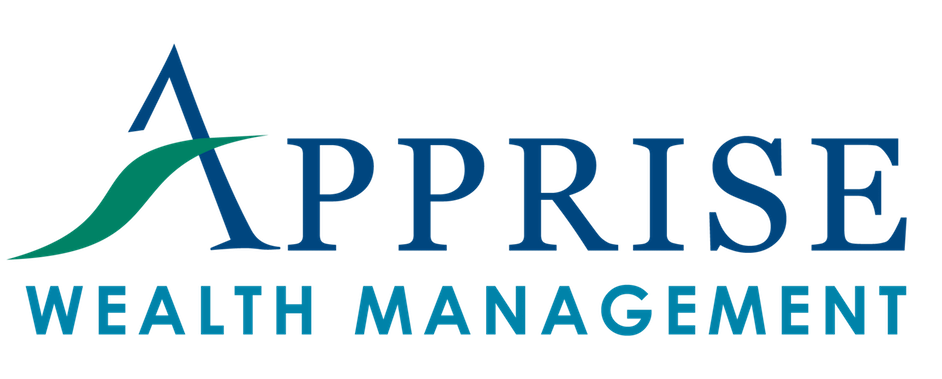Do you only think about income taxes when gathering the information to prepare your returns? If you want to lower your tax bill, think about taxes before the year is out – the earlier the better, too. If you wait until it is time to prepare your tax returns, it is generally too late – typically, you can only report what already happened. If you want to lower your tax bill, look forward not back.
INCOME TAX PLANNING, IN GENERAL
Implementing tax-reduction strategies can save you money both today and tomorrow. For example, steps such as maximizing retirement plan contributions, contributing to charities, and harvesting any tax losses can help lower your current and future tax bills. It is also good to review current year tax projections based on your year-to-date income and deductions and how they may differ from previous estimates.
CHANGES TO ITEMIZED DEDUCTIONS
Because of last year’s tax changes, many taxpayers will no longer itemize their deductions. The standard deduction nearly doubled – it is now $12,000 for singles, $24,000 for married filing jointly, and $18,000 for head of household. (These amounts were $6,350, $12,700, and $9,350, respectively in 2017.)
The amount taxpayers can deduct for state and local sales,income, and property taxes is capped at $10,000.
The amount of deductible mortgage interest is also limited going forward. In general, mortgage interest remains deductible if the mortgage does not exceed $1 million for tax years prior to 2018 and $750,000 for tax years after 2018. Interest paid on a home equity loan is no longer deductible unless the loan was used to improve the residence that serves as collateral for the loan.
You can no longer claim certain itemized deductions that were previously allowed:
· Theft and casualty losses(excluding damage resulting from a federally declared disaster)
· Unreimbursed employee business expenses and miscellaneous itemized deductions
· Tax preparation fees
· Investment advisor fees
· Unreimbursed job expenses
Medical expenses are still deductible. In fact, for 2018, the floor was lowered from 10% of Adjusted Gross Income to 7.5%.
Charitable donations are still deductible, but the rules were slightly modified. The cap for cash contributions to public charities was increased from 50% of Adjusted Gross Income (AGI) to 60% of AGI.
Eight Last-Minute Tips to Trim Your 2018 Tax Bill
· Make a charitable donation
· Donate your Required Minimum Distribution by making a qualified charitable distribution (QCD)
· Review your business activities
· Add to your retirement savings
· If applicable, open a retirement account for your children
· Increase your college savings
· Recognize losses on stocks held in taxable accounts
· Think about future years
CHARITABLE CONTRIBUTIONS
Consider Bunching Charitable Deductions
While charitable contributions are still deductible, the limitations on itemized deductions discussed above mean fewer taxpayers will realize this benefit.
Perhaps “clumping” or “bunching” charitable deductions by only making contributions in certain years would be beneficial. If you are close to the new threshold for itemized deductions, you could consider making your 2018 and 2019 charitable contributions in the same year and get a tax benefit for at least some of your donations.
Donor-Advised Funds
You could consider donor-advised funds (DAF). Such funds allow donations of nearly any amount. You can receive immediate tax benefits for your contribution. While you give up control of the assets and cannot reclaim them, you can take as long as you want to decide when, how much, and which charity gets paid from the DAF account.
Donate Appreciated Securities
Consider donating appreciated securities. You can deduct the fair market value of the donated asset and avoid paying capital gains taxes on any appreciation.
Clean out Your Closets
You can claim a deduction for items donated to charity. Have your children outgrown their clothes? Are they still in good shape? Consider donating them to a charitable organization. Be sure to prepare an itemized list of the items you give away.
Qualified Charitable Distributions(QCD)
If you are 70 ½ or older, charitably inclined, and subject to the required minimum distribution (RMD) rules for your retirement accounts you can donate up to $100,000 annually directly from your IRA to a qualifying (public) charity. There are two important factors to keep in mind:
· They can only be made using pre-tax funds held in an IRA (including SEP and SIMPLE IRAs as well as inherited IRAs). They cannot be made from 401(k)s, 403(b)s, or similar accounts.
· The distribution must be made directly from your IRA to the qualifying charity.
The QCD counts toward satisfying the IRA owner’s RMD. You do not receive a tax deduction for the transfer to the charity. However, that does not matter, as it is never added to your income in the first place.
This is almost always more effective than taking the RMD and separately donating cash in the same year to charity. It minimizes the IRA owner’s taxable income. It also reduces adjusted gross income (AGI). This is important because AGI is relevant in determining the taxation of Social Security benefits, Medicare surcharges, other tax deductions, credits, and benefits. On the other hand, an itemized deduction is not as valuable since it only reduces taxable income – it has no effect on AGI.
Perhaps even more importantly,those unable to itemize their deductions are, essentially, able to receive atax benefit for their charitable contributions.
LOOK AT ALL OF YOUR OVERALL ITEMIZED DEDUCTIONS
Assume you have $10,000 of deductible taxes, $10,000 of deductible mortgage interest, and $2,000 of one-time, deductible medical expenses. You normally make $3,000 of charitable contributions. That gives you total itemized deductions of $25,000. If you can donate $9,000 in 2018 and nothing in 2019 or 2020, you end up with $31,000 of itemized deductions this year and claim the $24,000 standard deduction each of the next two years. You rtotal deductions are $79,000. If you donate $3,000 all three years, you end up with total deductions of $73,000.
BUSINESS ACTIVITIES
Small Business Deduction
The new law provides numerous tax breaks for small businesses. Foremost among these is the 20% deduction on qualified business income (QBI) for certain entrepreneurs with pass-through entities. Flow-through businesses include partnerships, LLCs, S-Corporations, and sole proprietorships.
Please note that income phase-out rules apply to this deduction.These rules apply a sliding scale to move the deduction percentage from 20% to 0% as a taxpayer’s income goes from $315,000 to $415,000 ($157,500 to $207,500 if your filing status is single or married filing separately).
Additionally, those who own real estate investment trusts (REITs) or publicly traded partnerships, such as Master Limited Partnerships (MLPs), can also qualify for this deduction.
Do You Have a Hobby or a Business?
The IRS makes a distinction between hobbies and businesses. You must report income from both hobbies and businesses, but there are vast differences between the two when it comes to deductions and expenses.
If your activities generate a loss, you want to make sure you have a business rather than a hobby. The key factor is how much time you put into your side hustle and your attempts to make it profitable.
Under prior tax law, you could deduct hobby-related losses up to the amount of income generated by the activity. Like the miscellaneous itemized deductions discussed earlier, these costs were deductible to the extent they exceeded 2% of your adjusted gross income. Under the new law, this itemized deduction is eliminated.
RETIREMENT PLANNING
Determining an appropriate balance between spending and saving,both now and in the future is important. There are many options available for saving for retirement, and we can help you understand which option is best for you.
Contribute to Retirement Savings Accounts
You can contribute to an IRA, or a health savings account (HSA) up until April 15th. If you are self-employed, you can contribute to your retirement account(s) as late as the due date (including extensions) of your income tax return for the year.
In 2018, employees can defer up to $18,500 in their 401(k) plan. Those who are 50 or over can contribute another $6,000. If you are unable to put that much aside, at least save enough to qualify for any employer match.
Readers who own their own business or are self-employed can potentially put away large amounts of money on a pre-tax basis. You can set up a profit-sharing plan allowing you to contribute up to $55,000 per year to your retirement plan. If you are 50 or older, you can contribute an additional $6,000.
If you want to save even more (and get a correspondingly larger tax deduction), you can create a defined benefit plan and make total contributions of up to $220,000 in 2018.
Health Savings Accounts (HSAs)
With health care cost comprising such a large percentage of retirement expenses, HSAs (see here for more information) should be viewed as an important retirement savings vehicle. If your healthcare plan has a high deductible, contribute to your HSA.
Roth Conversions
The biggest change to retirement planning associated with the new tax law relates to Roth conversions. Effective with 2018, conversions can no longer be reversed. However, Roth conversions can still be valuable in the right circumstances, but they must be carefully planned, and tax projections must be accurate. As a result, waiting until late in the year to complete a Roth conversion can be prudent. The market’s weak fourth-quarter performance can also help limit the tax cost of a conversion.
CONSIDER YOUR CHILDREN
Do Your Children Have Earned Income?
If your children have earned income (even from activities such as tutoring, raking leaves, shoveling snow, babysitting, or mowing the lawn) you can open a retirement account for them. If you own your own business, you could also pay your child for helping you with the business. Payments your child receives for their work can be in cash – if it is properly documented.
You could open a Roth IRA and contribute an amount to the account equal to your child’s earned income. For example, say your child earned $1,500 for odd jobs this year. You could contribute that amount to a Roth IRA. Under current law, it would be allowed to grow tax-free while in the account. That means they could benefit from many years of tax-free compounding.
What could this mean? Assume your child contributes $1,500 per year to a Roth IRA from ages 13-18. When they reach age 70, they would have more than $196,000 in their account (assuming a 7% annual growth rate and contributions of $1,500 per year for six years – a total of only $9,000).
Firms such as Charles Schwab and Fidelity offer custodial Roth IRAs with no minimum investment and no maintenance fees. As the parent, you could serve as the “custodian” and maintain control of the account and invest on your child’s behalf until they reach the age of majority, which varies by state but is generally 18 or 21.
Importantly, amounts contributed to a Roth IRA can be withdrawn at any time without taxes or penalties. Once the account has been in existence for five years, your child can take a distribution of up to $10,00 to buy their first home, without incurring taxes or penalties on those funds. There is also an exemption for amounts used to fund qualified education expenses. However, there can be negative implications on financial aid eligibility for such withdrawals.
Education Funding
Funding education costs for children or grandchildren is important to many people. While the increase in college costs has slowed lately, it is still a major expense. It is important to know the myriad ways you can save for education to determine the optimal strategy. More than 30 states provide a state tax benefit for 529 plan contributions, so making contributions before the end of the year is important. With the added flexibility of funding K-12 years (set at a $10,000 annual limit), at least in some states, 529 accounts become even more advantageous. In addition, money deposited in a 529 account can potentially provide tax-free growth.
TAX-LOSS HARVESTING
Asset price volatility has increased this year. If you recognized gains earlier in the year and have unrealized losses on assets you still hold,consider selling them to offset some of your gains. If you have not recognized any losses or have unrecognized losses in excess of your gains, you can claim up to $3,000 in net losses to offset ordinary income. Any excess can be carried forward into future years.
One caveat. If you sell a security at a loss, you cannot buy the same or a similar security back within 30 days before or after the sale. If you do, the IRS will disallow any attempt to claim the loss on your tax return. (This is referred to as a wash sale.)
CASH-FLOW PLANNING
Review your 2018 spending and plan for next year. Understanding your cash flow needs is an important aspect of determining if you have enough assets to meet your goals. If you are retired, it is particularly important to maintain a tax-efficient withdrawal strategy to cover your spending needs. You want to position your assets in a way that will lower the taxes you pay when you withdraw your savings in retirement. If you are over age 70 ½, make sure you are taking your required minimum distributions because the penalties are significant if you do not.
CLOSING THOUGHTS
The decisions you make each year with your personal finances will have a lasting impact. We hope this blog has begun to generate some insight into areas of your personal finances that need attention. We are (or would be) honored to be your trusted adviser and partner. Please contact us if you would like to talk though year-end planning.
We hope you find this information valuable. If you would like to talk to us about financial topics such as your investments, creating a financial plan, college savings, ways to make your retirement savings more efficient, please fill out our contact form, and we will be in touch. We can schedule a call, a virtual meeting via Zoom, or a meeting at Apprise Wealth Management’s office in Northern Baltimore County.
Follow us:
Please note that we post information about articles we think can help you make better decisions about money on Twitter.
This article is not tax, legal, or other professional advice and cannot be relied upon for any purpose without consultation and advice from a retained professional.
For firm disclosures, see here: https://apprisewealth.com/disclosures/





